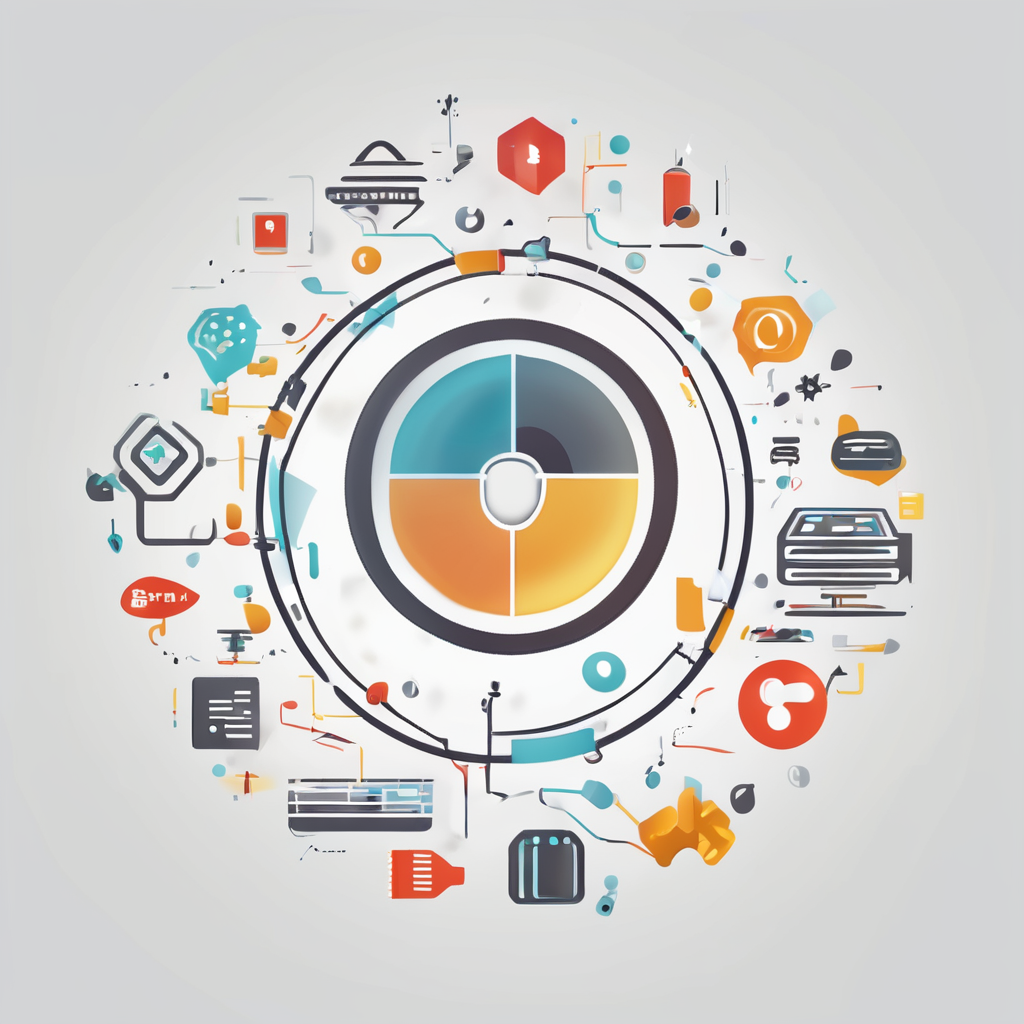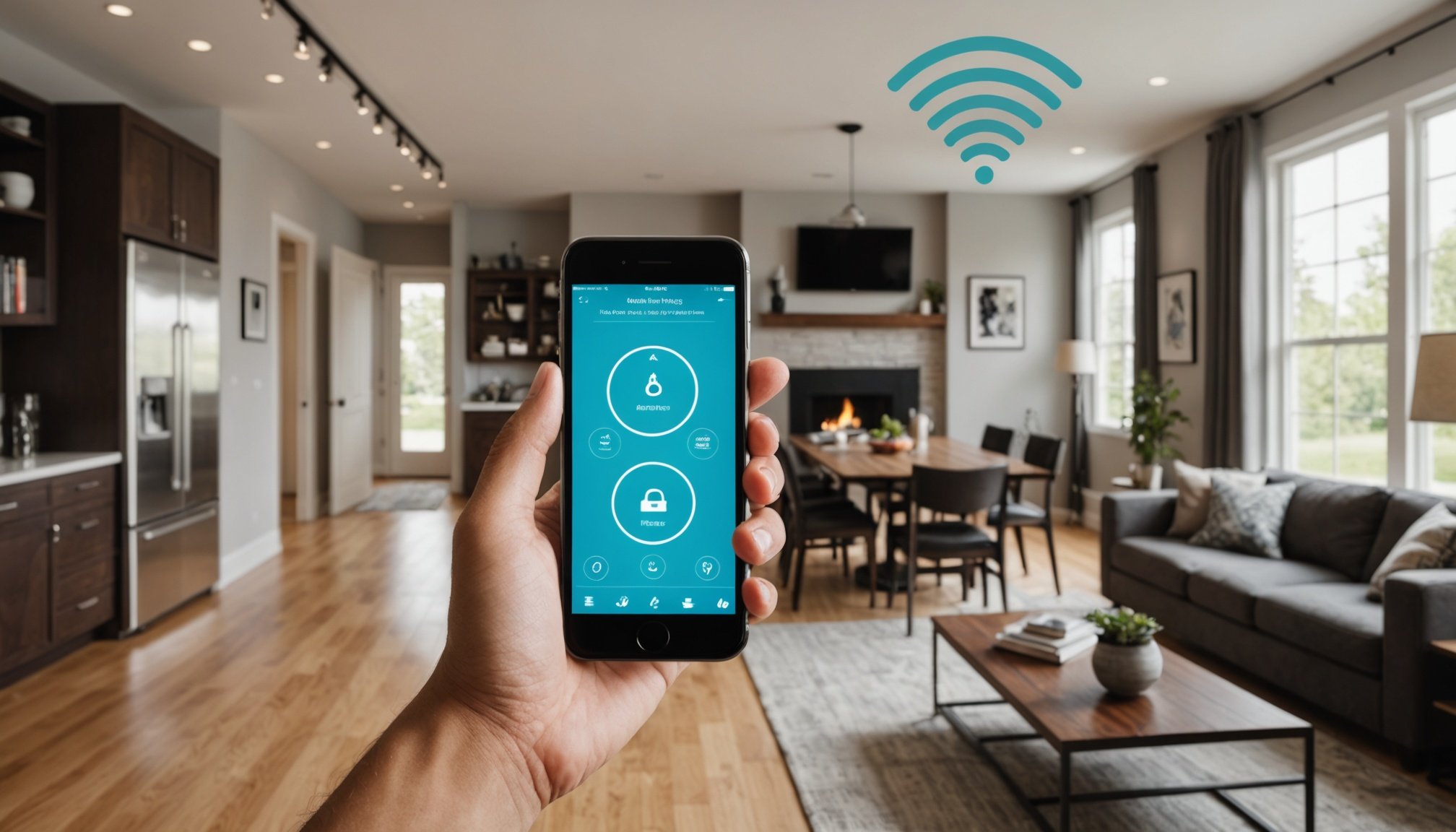Overview of Smart Home Automation
Smart home automation revolutionises everyday living by synchronising devices and automating routine tasks for more convenience and efficiency. These systems interconnect various home functionalities, from lighting to security, creating a cohesive ecosystem that responds to user preferences.
Real-time monitoring enhances this experience by offering instant insights and control over household devices. Imagine adjusting your thermostat or checking on surveillance through smartphone integration from miles away. Smartphones act as versatile hubs that manage and interact with smart home devices, ensuring seamless connectivity and control. With dedicated apps, users can configure settings, receive alerts, and keep track of energy usage remotely.
Also read : Take charge of your indoor atmosphere: effortless smart hvac control and monitoring via your smartphone
Potential use cases are vast. Consider a scenario where real-time monitoring detects a water leak and immediately notifies homeowners via their smartphone, allowing for swift intervention. Alternatively, smart lighting systems can automatically adjust based on natural light levels or occupancy, enhancing energy efficiency.
Smart home automation empowers individuals with tailored living environments, optimising comfort and safety. As technology advances, its possibilities continue to expand, offering more sophisticated solutions to everyday challenges.
Also to read : Mastering Remote Desktop: Top Smartphone Techniques for Seamless Access
Essential Components of a Smart Home System
A modern smart home ecosystem hinges on the seamless integration of various devices. Each component contributes significantly to the overall experience and efficiency of your smart home devices.
Key Devices for Smart Home Automation
For effective home automation, certain devices are indispensable:
- Smart lights, which allow you to adjust brightness and colour through voice commands.
- Smart locks, enhancing security by enabling remote locking and unlocking.
- Surveillance cameras, providing real-time monitoring and notifications.
These devices form the pillar of a reliable home ecosystem, where convenience meets security.
Internet of Things (IoT) Integration
The role of IoT devices is central to interconnectivity in a smart home. These devices communicate with each other, allowing for synchronized actions like turning on lights when a smart lock is activated. The Internet of Things enables a harmonious home ecosystem through efficient device communication.
Compatibility with Existing Technologies
Ensuring that your smart home devices are compatible with technologies like Zigbee, Z-Wave, and Wi-Fi is crucial. Devices must smoothly integrate with existing protocols to deliver a consistent user experience. This compatibility ensures the smart home ecosystem can expand and evolve without hassle.
Setting Up a Smart Home Automation System
Embarking on a smart home setup can be both exciting and daunting. To ensure a smooth installation process, following a well-structured guide is essential.
Step-by-Step Guide for a Basic Setup
-
Identify Your Needs: Determine which areas of your home you want to automate, such as lighting, security, or temperature control.
-
Choose a Hub: Select a central system to manage your devices. Popular choices include Amazon Echo, Google Home, or Apple’s HomeKit.
-
Install Smart Devices: Follow user guides for each device to successfully integrate them into your chosen hub.
-
Set Up Automations: Use the app associated with your hub to create automated routines that suit your lifestyle.
User guides from manufacturers are invaluable in this process to avoid missteps.
Recommended Products and Brands
Opt for reputable brands like Philips Hue for lighting, Ring for security, and Ecobee for smart thermostats. These products offer intuitive installation processes with comprehensive support.
Best Practices
- Always update firmware to prevent issues.
- Test setups frequently to address any malfunctions promptly.
- Consult online forums for troubleshooting advice.
By following a methodical approach, setting up your smart home automation can be seamless.
Benefits of Real-Time Monitoring
Real-time monitoring offers multiple advantages for homeowners, significantly enhancing home security and providing efficient energy management solutions. These systems allow you to monitor home activities remotely, ensuring you stay informed about any unusual occurrences even when away from home. By receiving real-time alerts and notifications, home security is vastly improved, allowing for immediate action in case of unexpected events such as intrusions or accidents.
Incorporating energy management features into your real-time monitoring system can lead to substantial cost savings. These systems help you track and optimize energy consumption by allowing you to adjust energy usage based on real-time data, turning off appliances when not needed, or scheduling energy usage for off-peak hours. This not only helps reduce energy bills but also contributes to a more sustainable lifestyle.
Some key benefits include:
- Enhanced security with instant notifications
- Cost-efficient energy management
- Ability to monitor and control from anywhere
By investing in real-time monitoring systems, homeowners can enjoy peace of mind knowing their homes and utility consumption are efficiently managed. This technological advancement helps protect both your property and your wallet.
Smartphone Integration and Control
Integrating smartphone apps into your smart home ecosystem can enhance your control and convenience. With a high level of customizable options, these apps allow homeowners to manage their devices seamlessly.
Best Apps for Smart Home Management
Choosing the best smartphone apps for managing your smart home is essential. One popular choice is SmartThings, which offers a comprehensive network for controlling various devices. Users also enjoy Google Home for its voice control and compatibility across platforms. With these apps, everything from lighting to remote access of security systems becomes straightforward and efficient.
Setting Up Remote Access to Your Devices
Setting up remote access can initially seem daunting, but modern solutions make it simpler than ever. Start by downloading the app linked to each device you own. Follow setup instructions to pair devices with your Wi-Fi network, ensuring they can be accessed wherever you have an internet connection. This setup offers real-time management, allowing you to adjust settings even when you’re not home.
Ensuring User-Friendly Experiences
For optimal engagement, it’s crucial that smartphone interfaces remain user-friendly. Look for apps prioritizing intuitive design, where essential features are easily accessible. A well-designed app reduces the learning curve and encourages regular use, thereby enhancing your overall smart home experience.
Troubleshooting Common Smart Home Issues
Navigating the world of smart home troubleshooting can feel daunting, but understanding and identifying common problems is a good starting point. Many households face similar challenges with their smart devices, such as connectivity issues, device malfunctions, or integration problems.
Identification of Frequent Issues
Connecting smart devices without a hitch often tops the list of common problems. Issues like weak Wi-Fi signals or mismatched network settings are frequent culprits. Alas, software updates might sometimes cause compatibility conflicts across devices. Identifying these early can save a lot of headaches.
Step-by-step Troubleshooting Tips
To tackle these, start with the basics: ensure your Wi-Fi signal is strong enough. For connectivity problems, try rebooting the router and the device. Check for any necessary software updates that might resolve compatibility dilemmas. If a device doesn’t respond, a factory reset could sometimes do the trick.
When to Seek Professional Help vs. DIY Solutions
While many issues can be tackled with a bit of patience and online resources, knowing when to seek professional help is crucial. Persistent problems, like recurring connectivity drops or unexplained malfunctions, often warrant the expertise of a technician. Understanding the line between DIY solutions and professional intervention ensures a smooth smart home experience.
Future Trends in Smart Home Automation
The smart home industry is evolving rapidly, with innovations continuously reshaping how we interact with our living spaces. Emerging technologies, such as the Internet of Things (IoT), are pivotal in linking various devices and ensuring seamless connectivity within homes. This interconnectivity forms the backbone of future smart home trends. One significant shift is the evolution of real-time monitoring systems, which are anticipated to become more sophisticated. These systems are expected to incorporate advanced sensors and analytics, providing homeowners with instant insights into their energy consumption, security status, and even health parameters.
Artificial intelligence (AI) is poised to revolutionise home automation by enhancing personalisation and efficiency. AI-driven systems can learn homeowner preferences, adjust settings automatically, and anticipate needs, further simplifying daily life. Additionally, AI is central to developing more intuitive voice-activated assistants, offering an improved experience in managing household tasks.
Looking forward, the integration of 5G technology is another game-changer, promising faster data transmission and more reliable connections, thereby enhancing the overall functionality of smart homes. Collectively, these technology advancements represent promising strides towards intelligent, efficient, and responsive home environments, aligning with future ambitions for comfort and sustainability.
Summary of Products and Recommendations
To simplify your quest for optimal consumer choices in the smart home arena, we’ve aggregated expert insights and real user reviews.
Category-wise Best Product Picks
Choosing the best products in each category can be daunting. Our product recommendations aim to ease this decision-making process by curating top picks, renowned for their efficiency and user-friendly features. Whether it’s smart lighting, thermostats, or vacuum cleaners, each selected gadget promises to enhance your smart home experience.
User Reviews and Feedback
An essential part of making informed consumer choices is understanding user experiences. Feedback indicates a leaning towards products that integrate easily with existing systems and provide substantial customer support. These insights guide our product recommendations, ensuring a balance of innovation and practicality.
Considerations for Future Purchases
When contemplating new acquisitions, consider the compatibility, long-term support, and potential consumer choices benefits. Expert reviews consistently underscore the importance of future-proofing smart devices, ensuring they evolve alongside your needs. Our recommendations are based on these critical factors, ensuring optimal satisfaction from your investments.






